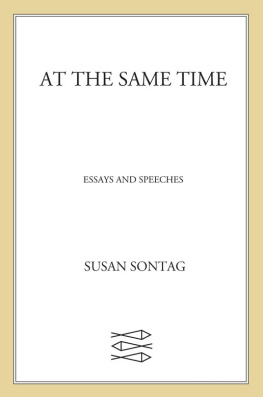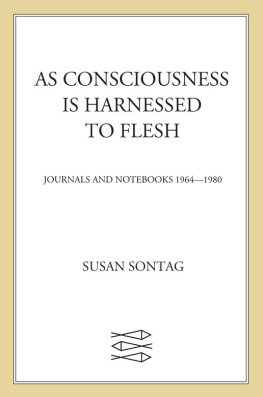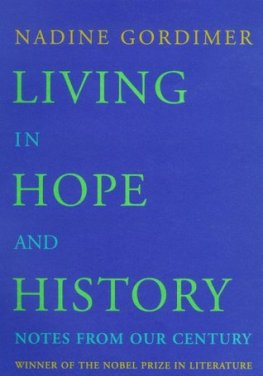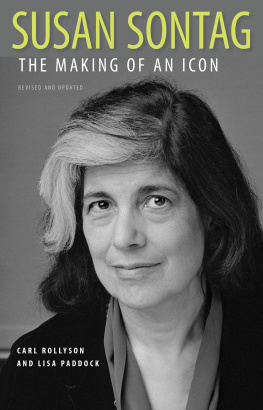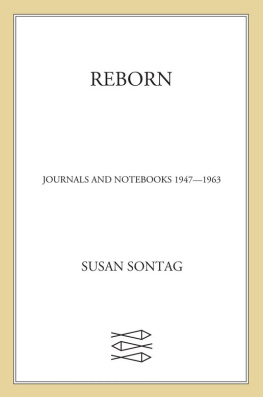An Argument About Beauty appeared in Daedalus 131, no. 4 (Fall 2002).
1926 Pasternak, Tsvetayeva, Rilke was written as a preface to Letters, Summer 1926: Boris Pasternak, Marina Tsvetayeva, Rainer Maria Rilke (New York Review Books Classics, 2001). Prior to the books publication, the essay appeared in the Los Angeles Times Book Review , August 12, 2001, with the title The Sacred Delirium of Art.
Loving Dostoyevsky is the introduction to Leonid Tsypkins Summer in Baden-Baden (New Directions, 2001). An earlier version appeared in The New Yorker , October 1, 2001.
A Double Destiny: On Anna Bantis Artemesia is the introduction to Anna Bantis Artemisia (Serpents Tail, 2004). Prior to the books publication, the essay appeared in The London Review of Books , October 9, 2003.
Unextinguished: The Case for Victor Serge is the introduction to Victor Serges The Case of Comrade Tulayev (New York Review Books Classics, 2004). An abridged version appeared in The Times Literary Supplement on April 10, 2004.
Outlandish: On Halldr Laxnesss Under the Glacier is the introduction to Halldr Laxnesss Under the Glacier (Vintage, 2004). It also appeared in The New York Times Book Review , February 20, 2005.
9.11.01 was written for The New Yorker. An edited version appeared in the Talk of the Town section on September 24, 2001. The original version has never before appeared in English.
A Few Weeks After was written in response to questions sent from Rome by Francesca Borrelli, a journalist on the staff of the Italian newspaper il manifesto, and was published in that paper on October 6, 2001. It has never before appeared in English.
One Year After was originally published as War? Real Battles and Empty Metaphors in The New York Times , Op-Ed page, September 10, 2002.
Photography: A Little Summa was written originally for El Cultural (July 10-16, 2003) and also appeared in The Los Angeles Times Book Review as On Photography (The Short Course) on July 27, 2003.
Regarding the Torture of Others was originally published in a slightly different form as The Photographs Are Us in The New York Times Magazine , May 23, 2004.
The Conscience of Words, a speech given in Jerusalem on May 9, 2000,on the occasion of the acceptance of the Jerusalem Prize, was published in The Los Angeles Times Book Review on June 10, 2001.
The World as India, the 2002 St. Jerome Lecture on Literary Translation, appeared in The Times Literary Supplement on June 13, 2003.
On Courage and Resistance, the keynote speech on the occasion of the presentation of the Rothko Chapel Oscar Romero Award to Ishai Menuchin, chairman of Yesh Gvul (There Is a Limit), the Israeli soldiers movement for selective refusal, in 2003, appeared in The Nation on May 5, 2003.
Literature Is Freedom is a speech delivered at the Paulskirche, Frankfurt, on October 12, 2003, on the occasion of the acceptance of the Friedenspreis (Peace Prize) of the German Book Trade. Excerpts ran in The Los Angeles Times Book Review on October 26, 2003, and it was published in full by Winterhouse Editions in 2004.
At the Same Time: The Novelist and Moral Reasoning, the first Nadine Gordimer Lecture, delivered in Cape Town and Johannesburg in March 2004, has never before appeared in print.
Responding at last, in April 2002, to the scandal created by the revelation of innumerable cover-ups of sexually predatory priests, Pope John Paul II told the American cardinals summoned to the Vatican, A great work of art may be blemished, but its beauty remains; and this is a truth which any intellectually honest critic will recognize.
Is it too odd that the pope likens the Catholic Church to a greatthat is, beautifulwork of art? Perhaps not, since the inane comparison allows him to turn abhorrent misdeeds into something like the scratches in the print of a silent film or craquelure covering the surface of an Old Master painting, blemishes that we reflexively screen out or see past. The pope likes venerable ideas. And beauty, as a term signifying (like health) an indisputable excellence, has been a perennial resource in the issuing of peremptory evaluations.
Permanence, however, is not one of beautys more obvious attributes; and the contemplation of beauty, when it is expert, may be wreathed in pathos, the drama on which Shakespeare elaborates in many of the sonnets. Traditional celebrations of beauty in Japan, like the annual rite of cherry-blossom viewing, are keenly elegiac; the most stirring beauty is the most evanescent. To make beauty in some sense imperishable required a lot of conceptual tinkering and transposing, but the idea was simply too alluring, too potent, to be squandered on the praise of superior embodiments. The aim was to multiply the notion, to allow for kinds of beauty, beauty with adjectives, arranged on a scale of ascending value and incorruptibility, with the metaphorized uses (intellectual beauty, spiritual beauty) taking precedence over what ordinary language extols as beautifula gladness to the senses.
The less uplifting beauty of face and body remains the most commonly visited site of the beautiful. But one would hardly expect the pope to invoke that sense of beauty while constructing an exculpatory account of several generations worth of the clergys sexual molestation of children and protection of the molesters. More to the pointhis pointis the higher beauty of art. However much art may seem to be a matter of surface and reception by the senses, it has generally been accorded an honorary citizenship in the domain of inner (as opposed to outer) beauty. Beauty, it seems, is immutable, at least when incarnatedfixedin the form of art, because it is in art that beauty as an idea, an eternal idea, is best embodied. Beauty (should you choose to use the word that way) is deep, not superficial; hidden, sometimes, rather than obvious; consoling, not troubling; indestructible, as inart, rather than ephemeral, as in nature. Beauty, the stipulatively uplifting kind, perdures.
The best theory of beauty is its history. Thinking about the history of beauty means focusing on its deployment in the hands of specific communities.
Communities dedicated by their leaders to stemming what is perceived as a noxious tide of innovative views have no interest in modifying the bulwark provided by the use of beauty as unexceptionable commendation and consolation. It is not surprising that John Paul IIand the preserve-and-conserve institution for which he speaksfeels as comfortable with beauty as with the idea of the good.
It also seems inevitable that when, almost a century ago, the most prestigious communities concerned with the fine arts dedicated themselves to drastic projects of innovation, beauty would turn up on the front line of notions to be discredited. Beauty could not but appear a conservative standard to the makers and proclaimers of the new; Gertrude Stein said that to call a work of art beautiful means that it is dead. Beautiful has come to mean merely beautiful: there is no more vapid or philistine compliment.

